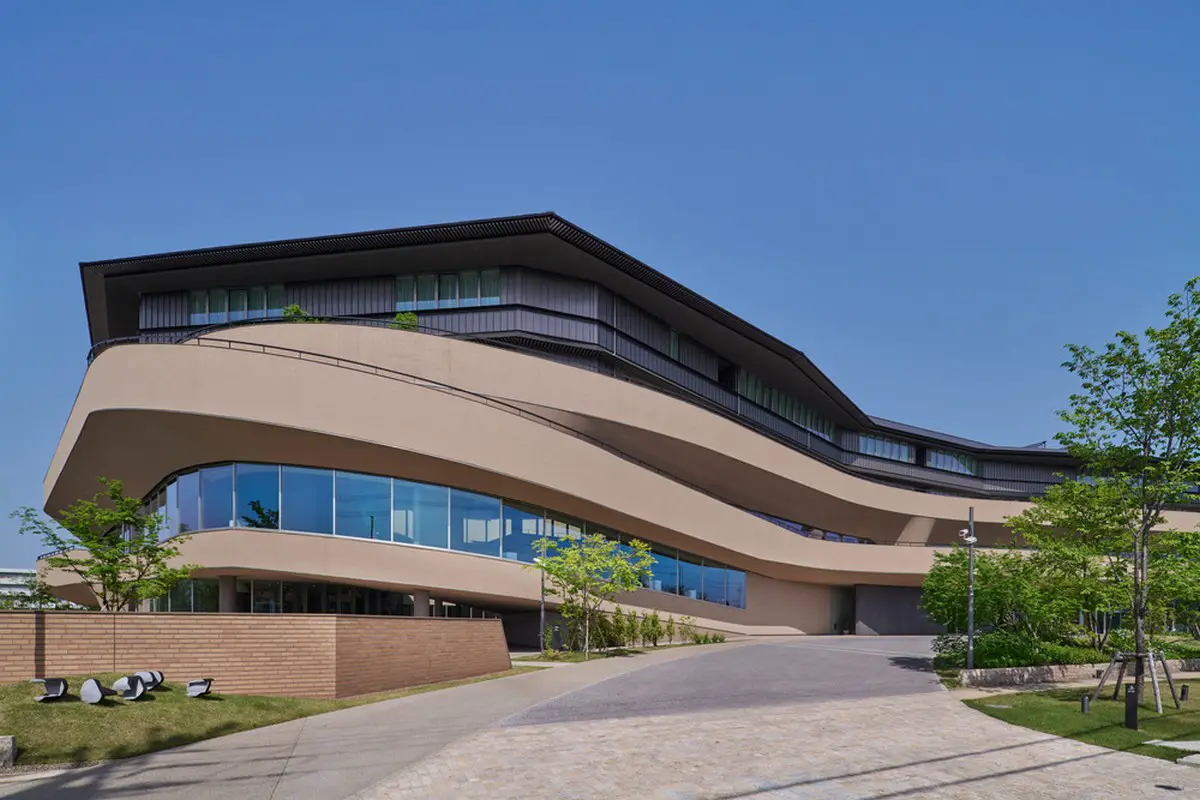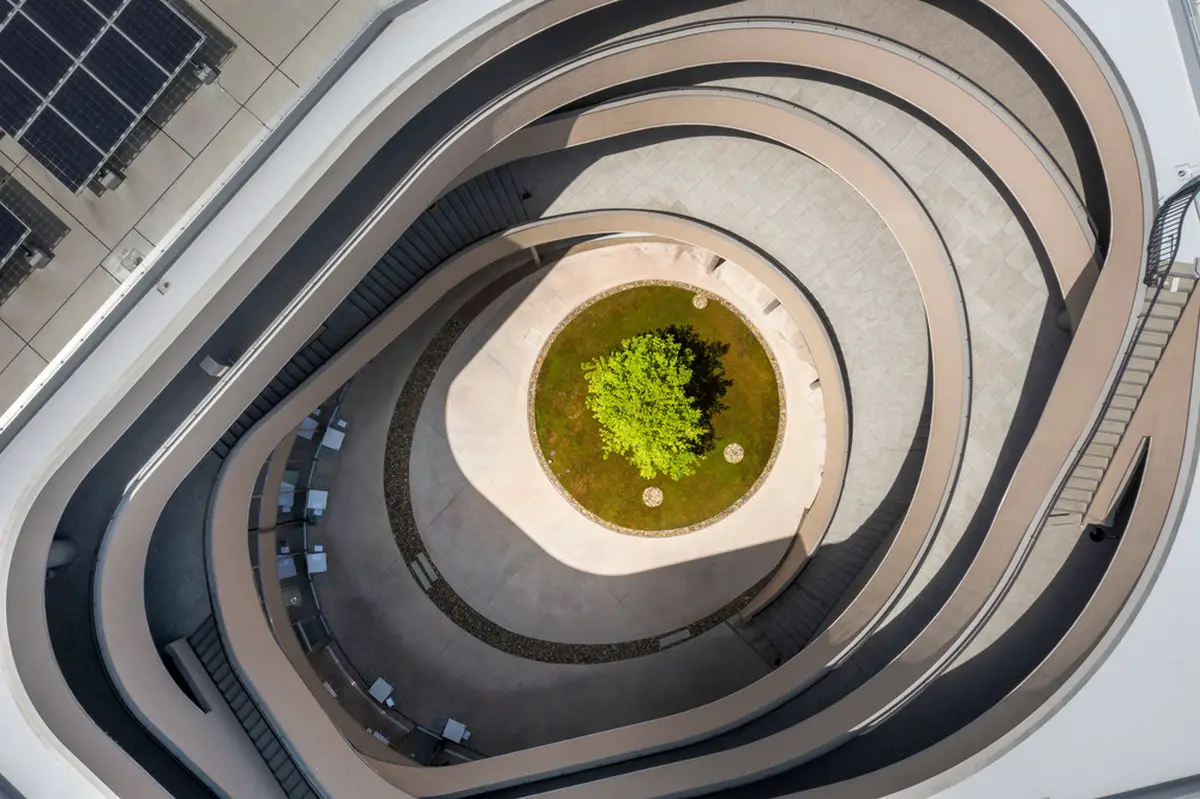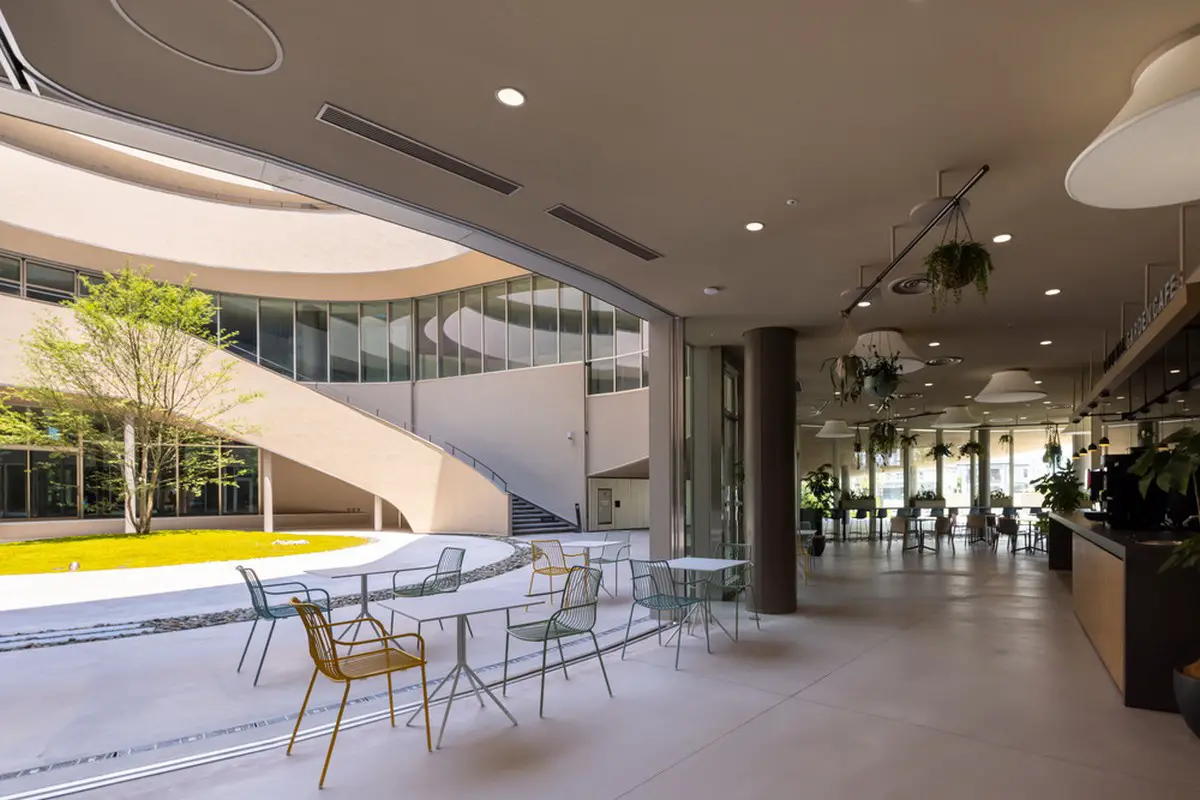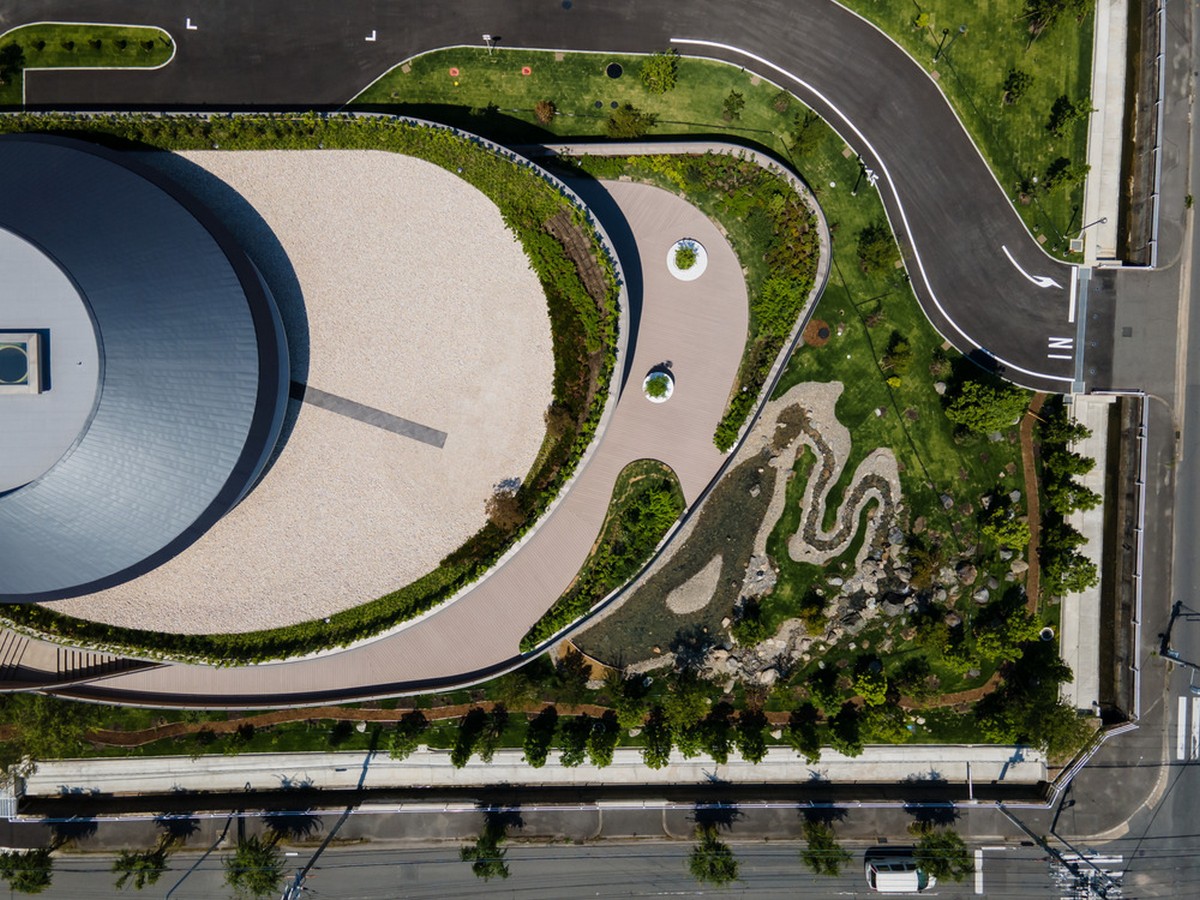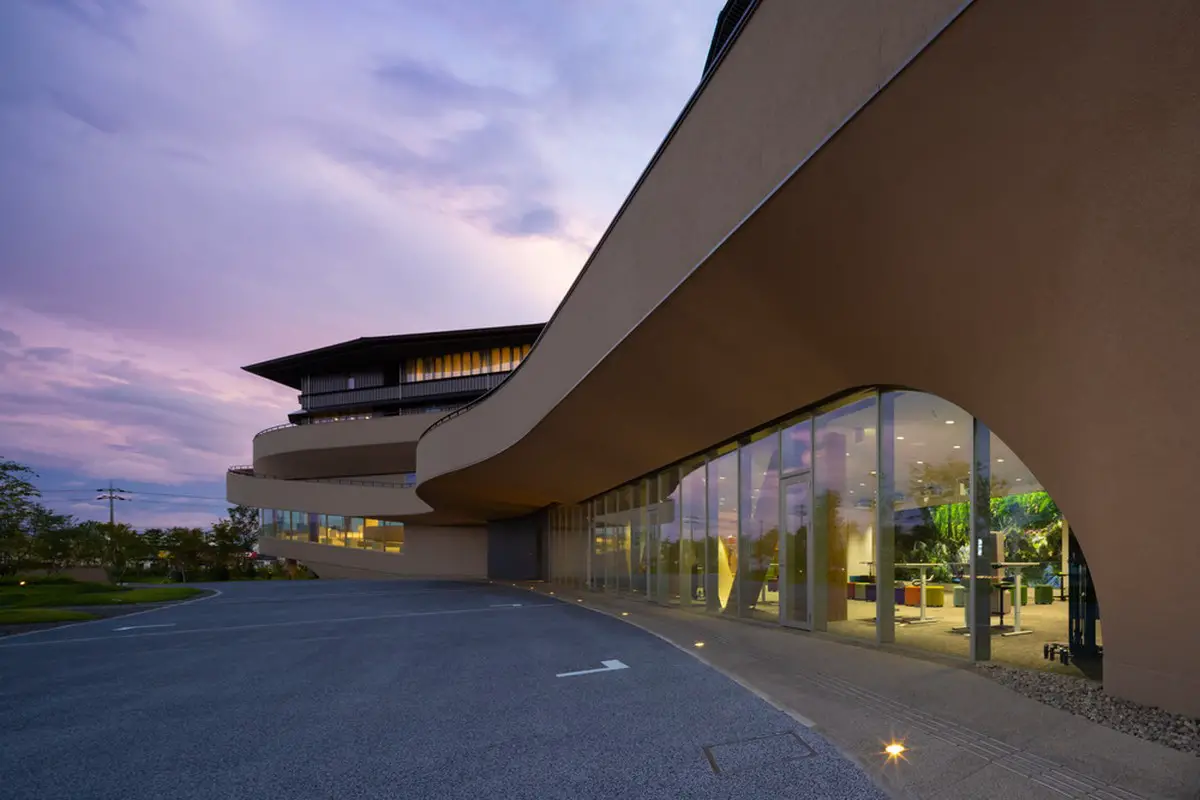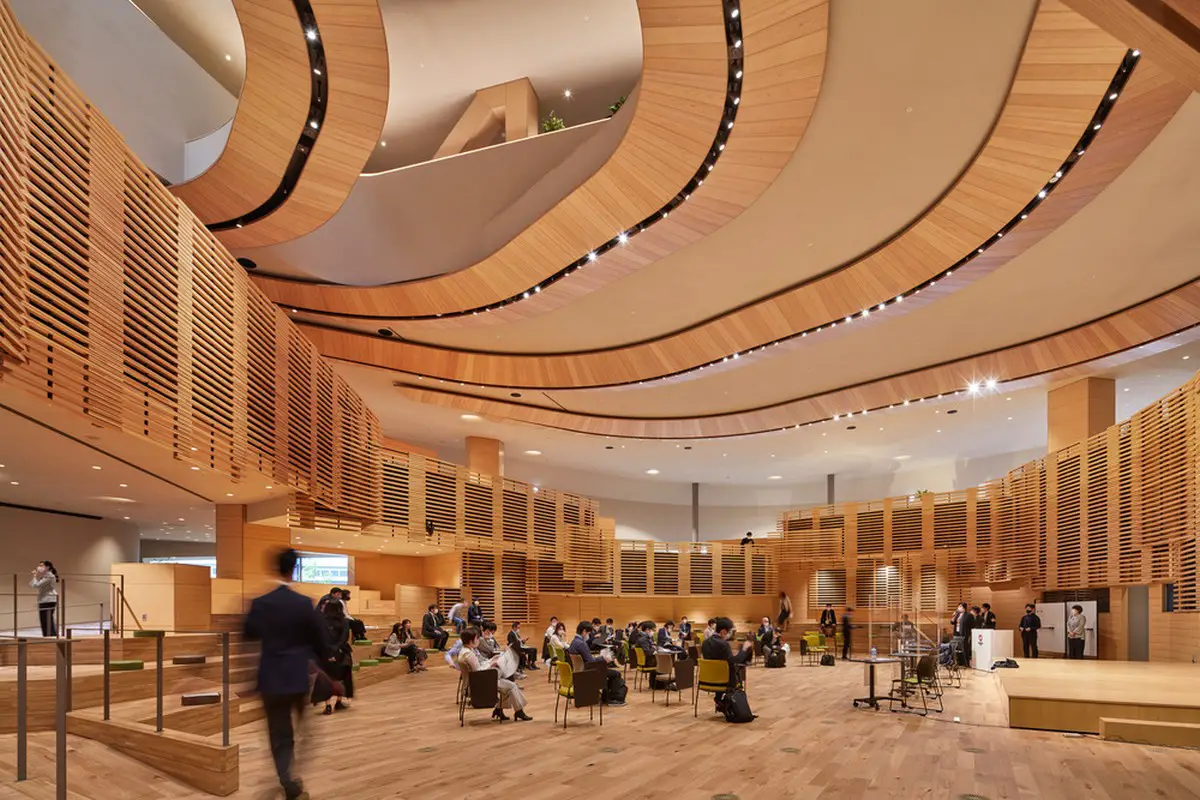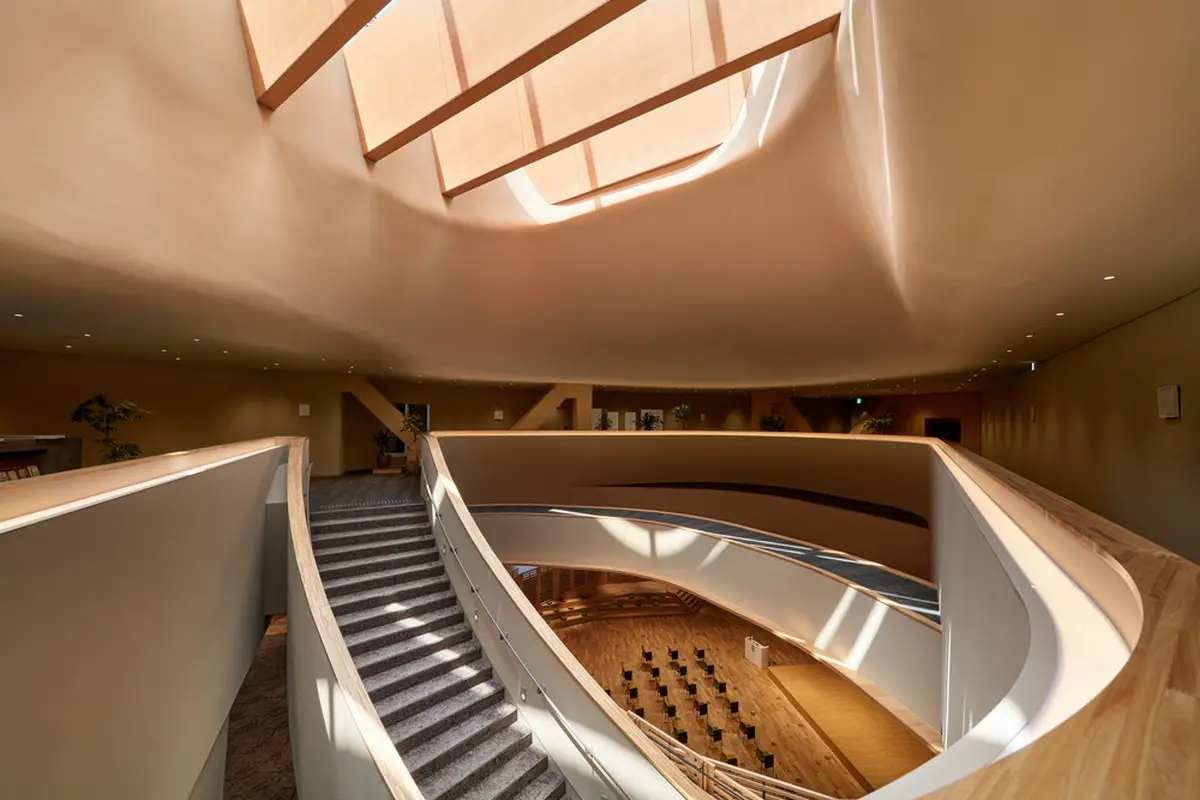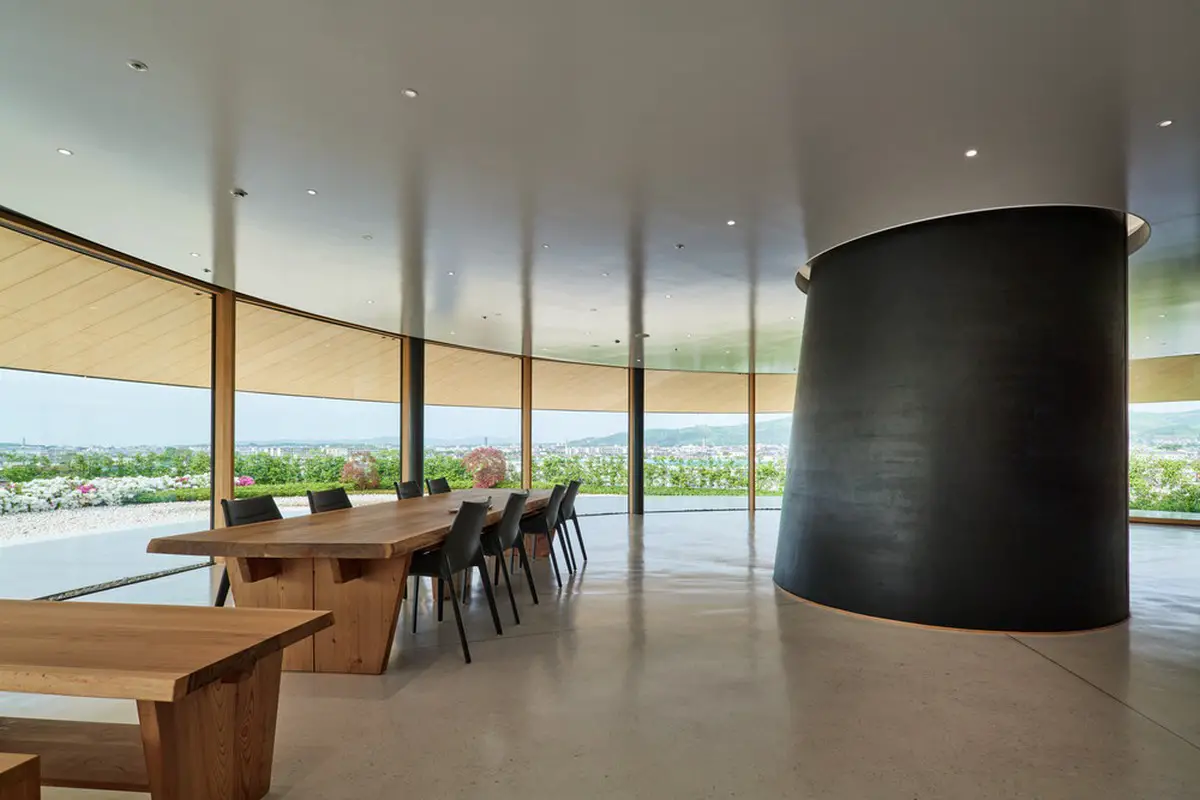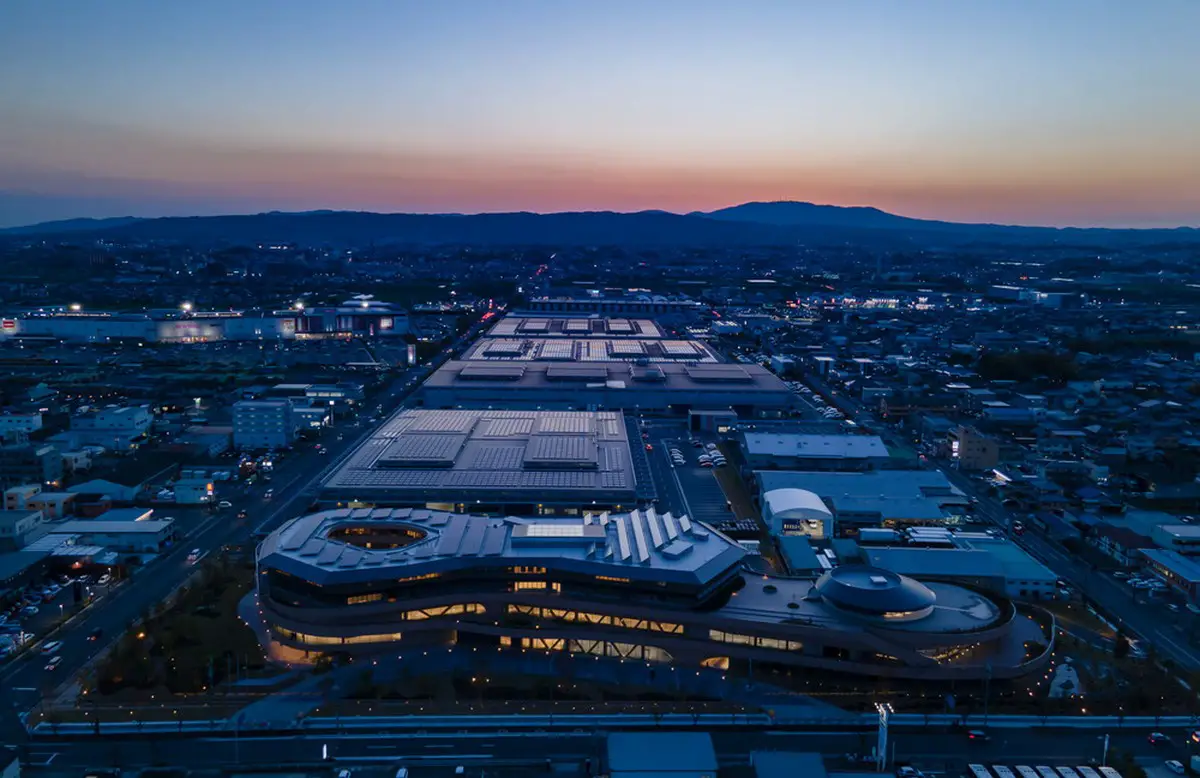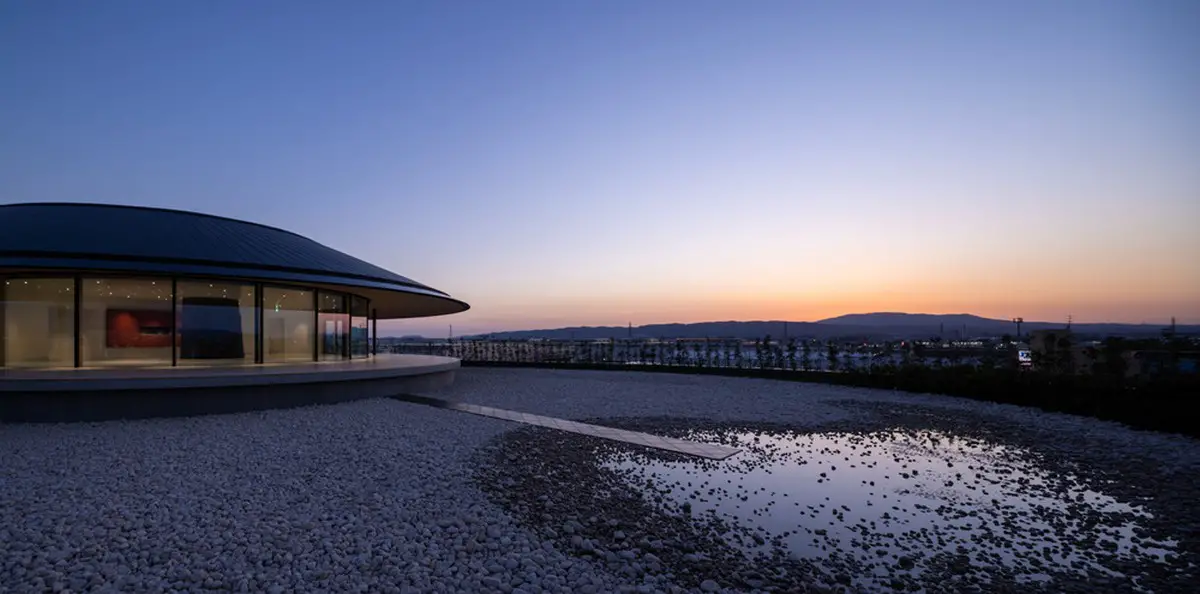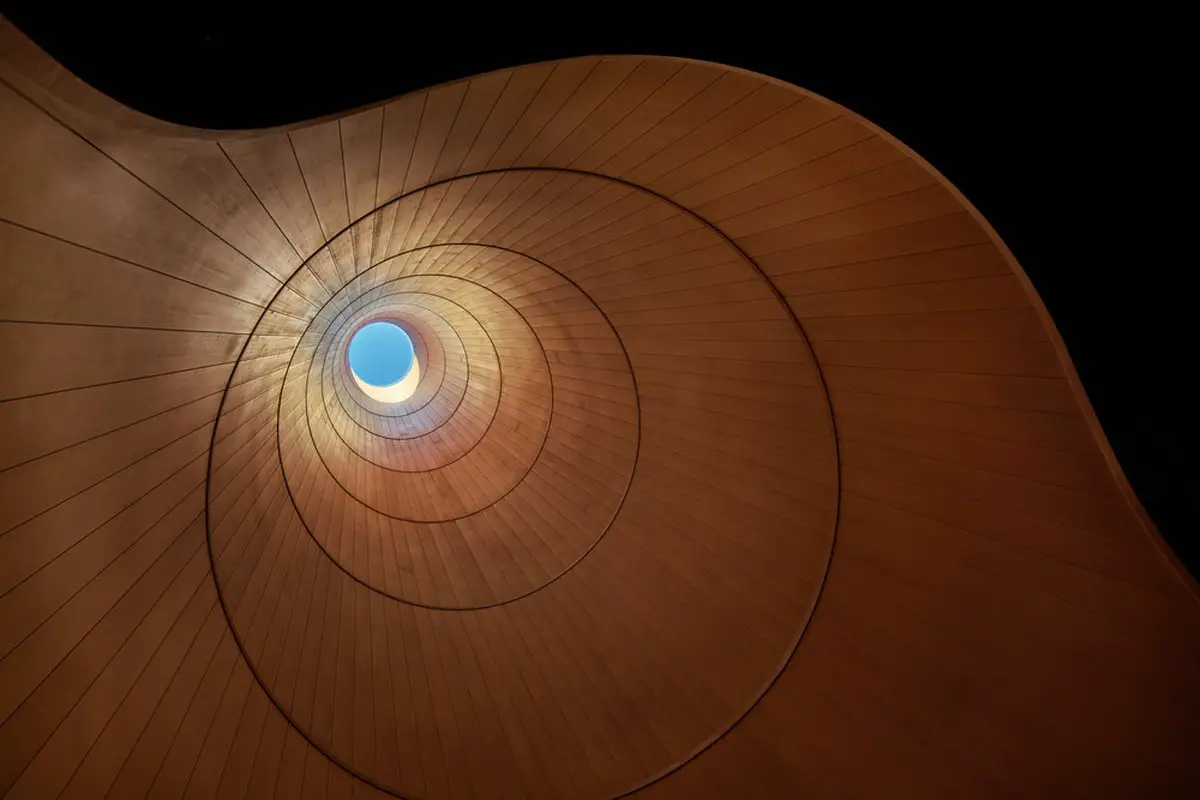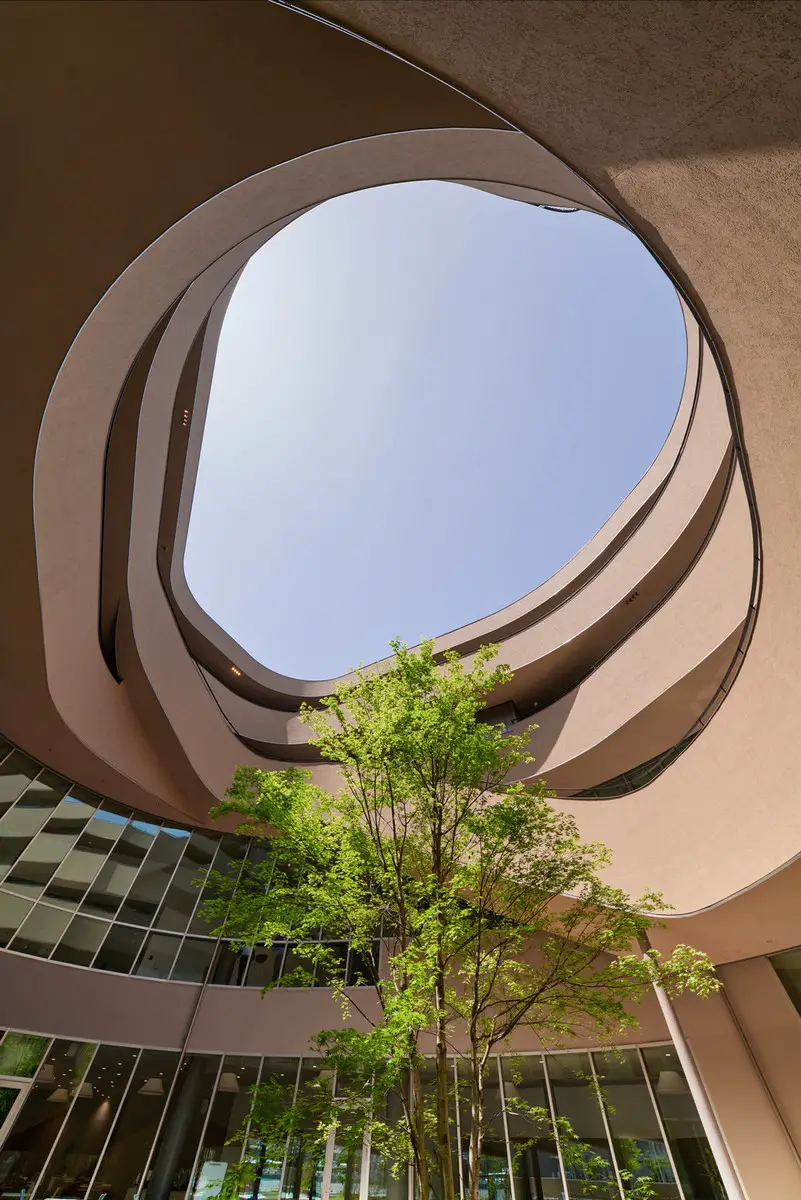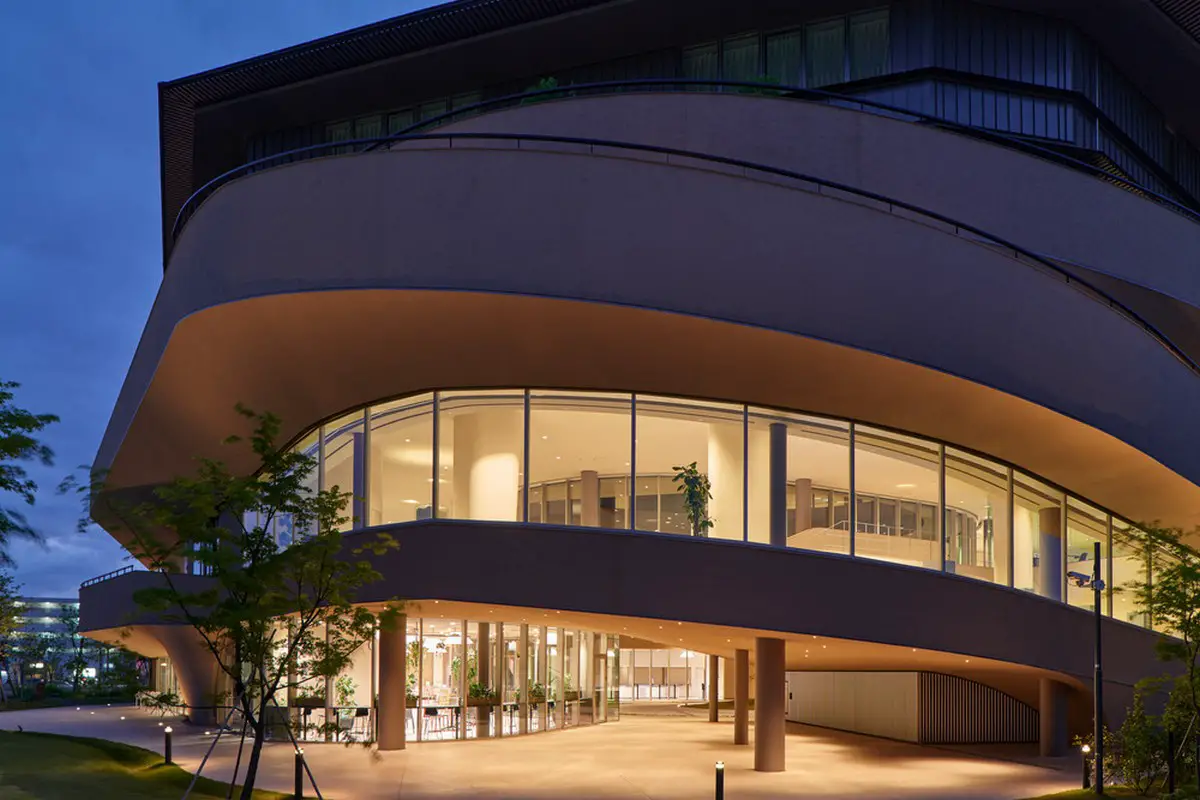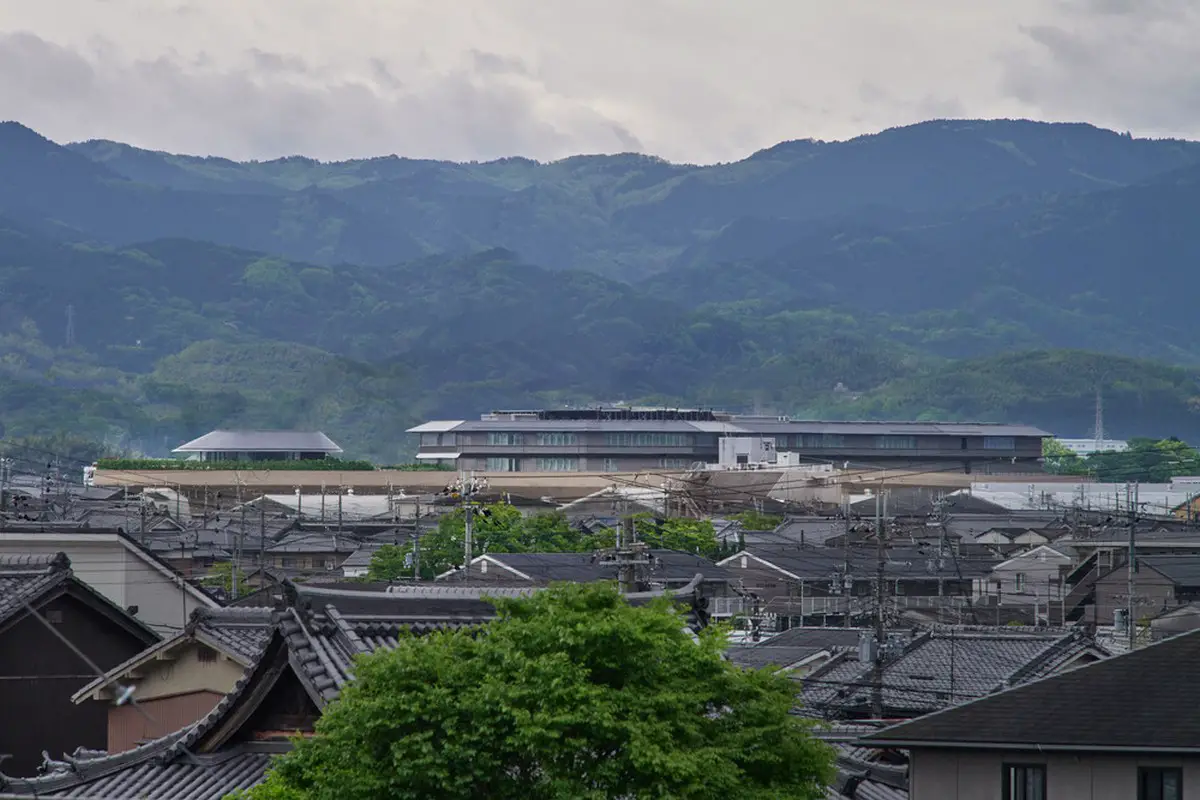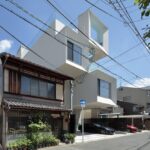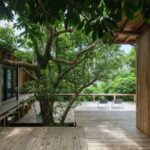MORI no KAISHO, Meeting Place of Forest, Building Development, Design, Images, Nara Architecture, Photography
MORI no KAISHO, Meeting Place of Forest in Nara, Japan
23 January 2024
Architect: Tetsuo Kobori Architects
Location: Nara, Japan
photo © Tomoyuki Kusunose
Photos: Koji Yamazaki and Tomoyuki Kusunose
Meeting Place of Forest, Nara, Japan
Tetsuo Kobori Architects, Daiwa House Industry Co., Ltd., and Fujita Corporation proudly announce that they have won the Best of Best in the Institutional Architecture category at Architecture MasterPrize (AMP) 2023, one of the most prestigious international architecture awards in the world.
photo © Tomoyuki Kusunose
The design team aimed to create a place of open exchange and co-creation for 49,000 employees with this project, implemented at the request of Daiwa House Group, which engages in the provision of construction and real estate services. Although the official name of this facility is “Daiwa House Group MIRAI KACHI KYOSO Center ‘Kotokurie’”, the place is better known as MORI no KAISHO, which means “Meeting Place of Forest” in Japanese.
Creating a Kaisho of the modern time: A New Meeting Place
The design team started by thinking about the significance of a place for people gather in a rapidly changing and unpredictable society in terms of what it means to gather and learn together. During the design phase, three workshops were held in total with members from across the entire Daiwa House Group to incorporate the opinions and ideas of many people who would be using this facility.
Based on keywords that emerged from the workshop sessions, they decided that the concept for this facility would be “MORI no KAISHO,” or a “Meeting Place of Forest”. “Forest” refers to the Yoshino forest, the birthplace of the Daiwa House Group’s founder, with its beautiful landscape of light, wind, and water that nurtures an abundant ecosystem.
On the other hand, “kaisho” refers to a place for cultural exchange and communication in the Muromachi period, where people from different social classes would sit in a circle and compose traditional renka and waka poetry.
Drawing inspiration from these concepts, the idea arose that it should serve as a modern-day kaisho, where people can gather, inspire and influence each other.
Memories of the Land from 1,300 years ago
The site is located in the southern part of Heijyo-kyo, the ancient capital of Japan. Archeological surveys of buried cultural properties prior to construction unearthed the remains of settlements and dwellings from approximately 1,300 years ago. The architects were deeply impressed by the remains of wells, building foundations, and pillars. The landscape confirmed their conviction that the essence of human gathering will never change and that the memories of the land should be passed on to the future.
The excavated soil, reused for the exterior wall material and the trace of the settlement, was expressed in the architecture to recreate memories.
Harmony of Three Elements: Wind, Sun, and Water
In order to give the building a sense of scale that allows people to feel connected to each other, the 230m-long site was largely segmented into three sections, namely “wind”, “sun”, and “water”, which constitute the building. The idea echoes the phrase set forth by the founder as his vision for the enterprise in the twenty-first century. Accordingly, the Sun Hall is a space open 360 degrees to allow natural light, with a capacity of 500 people. The Wind Patio is a place for conversation while dining. And the Water Salon is a place to learn about the founder’s philosophy and to reflect on oneself.
The three halls are interconnected by circulation routes that intertwine like a Möbius loop, creating organic and continuous spaces that impose no restrictions on human activities. The first and second floors of the training area are continuously connected by slopes. All areas, centered around the training space called Studio, are open and can be used as connected spaces.
Trainees can see each other’s training sessions, and the loose overlapping of their activities creates an environment where they can mutually inspire and stimulate each other. In the open spaces, furniture and other elements are placed throughout to provide opportunities for people to gather, and all areas can be used for training and interaction. Slope spaces can be used for exhibitions and other media functions to inspire visiting employees.
The third and fourth floors are accommodation zones, and the “master living room,” where trainees can get together after training and share their enthusiasm, is located above the Sun Hall and connected to it by an atrium. Trainees are led from the master living room to six “cabins” where they interact in small groups to consolidate their learning, and then to individual booths for sleeping.
From the reception area in the Water Salon, on the third floor, people can see the mountains and Todaiji Temple, and get a sense of the horizon of Yamato Lake, which originally stretched across the ancient Nara Basin.
The idea was to create a place where employees can have discussions with their colleagues and draw a grand vision for the future, while feeling the temporal axis connecting the past, present, and future.
The design team hopes that this facility will serve as a place of co-education, co-creation, and co-existence for developing new human resources for the new era, where various people can introduce their ideas through activities including educational support for children who will lead the future, and collaboration with local companies and municipalities.
ReForm of Garden in Nara: Building Information
Design: Tetsuo Kobori Architects – https://tk-a.jp/
Official project name: Daiwa House Group MIRAI KACHI KYOSO Center “Kotokurie”
Location: Nara, Japan
Client: Daiwa House Industry Co., Ltd
Architects: Tetsuo Kobori Architects, Daiwa House Industry Co., Ltd, Fujita Corporation
Design Team:
Tetsuo Kobori Architects: Tetsuo Kobori, Shun Soda, Yusuke Nakanishi, Rumi Maejima, Kazuya Iida, Takashi Seki
Daiwa House Industry Co., Ltd.: Junya Ono, Mayuko Adachi
Fujita Corporation: Mitsuhiro Kono, Shinya Fujii, Yoichiro Ishikawa, Shunsuke Koyama, Aki Yamanouchi
Disaster Management: Fujita Corporation
Lighting: Sawada Lighting Design & Analysis Inc.
Landscape Design: Nikken Sekkei Ltd
Furniture: DesignArc Co., Ltd.
Biophilic Design: Pasona Panasonic Business Service Co., Ltd.
Display and Information Media: TOPPAN INC.
Learningscape: Nobuyuki Ueda
Workshop: Doshisha Women’s College of Liberal Arts
Workshop Research: Shiro Yoshida, Koji Sugimoto
Graphic Recording: Glagrid Inc.
Construction: Daiwa House Industry Co., Ltd.
Principal Use: Laboratory with Meeting Hall
Structure: Steel Frame
Completion: 2021
Photo: Tomoyuki Kusunose
Awards:
The 17th Japan Facility Management Association Award (Japan)
The 3rd Green Infrastructure Award (Japan)
The 56th Japan Sign Design Award (Japan)
Interior Planning Award 2022 (Japan)
Wood Design Award 2021(Japan)
The 5th EcoPro Awards
The 35th Nikkei New Office Award (Japan)
The Minister of the Environment Awards for Climate Action 2022 (Japan)
The 17th Japan Facility Management Association Award (Japan)
International Design Awards (IDA) 2022 (U.S.A)
Energy Conservation Grand Prize 2023 (Japan)
About Tetsuo Kobori Architects
Tetsuo Kobori, a founder of Tetsuo Kobori Architects, born in 1971 in Gifu. In 1997, he completed his master’s degree in architectural engineering at Hosei University, under Hidenobu Jinnai. After graduation, he joined Kume Sekkei, and founded Tetsuo Kobori Architects in 2008. Since 2020, he has been teaching as a professor at the Faculty of Engineering and Design, Hosei University.
Tetsuo Kobori places great importance on dialogue with clients and, through a series of workshops, he is always striving for better architecture. He works to create new architecture and places that create a connection between people and the history and natural environment of the place.
Tetsuo Kobori Architects has been recognized by numerous international awards, including:
IDA (International Design Awards) 2022, Silver (U.S.A)
German Design Award, 2020 winners (Germany)
SKY DESIGN AWARDS, 2020 Shortlist (Canada)
Dedalo Minosse International Prize, 2019 Special Prize (Italy)
International Architecture Awards, 2019 (U.S.A)
JIA (The Japan Institute of Architects) Grand Prix, 2016 and 2018 (Japan)
ABB LEAF Award, 2018 Shortlist (U.K)
RIBA International Prize, 2018 Longlist (U.K)
AIJ (Architectural Institutional Japan) Award, 2017(Japan)
About Daiwa House Industry Co., Ltd.
The operations of Daiwa House Industry Co., Ltd. stretch outward from its core business of housing to encompass a wide variety of other fields, including the provision of physical infrastructure. By combining expertise in these different fields, they have grown to become an unrivaled corporate group capable of integrated activities ranging across all aspects of community development.
Leveraging the capabilities of its full value chain—in which they collaborate with other enterprises to engage in preparatory earthworks, the construction of houses and other buildings, and post-sale maintenance and management—they have widened their sphere of operations from Japan to the rest of the world, and have been contributing to the creation of new communities in developing countries.
Daiwa House Industry major awards include:
Fortune Global 500, 2010-2023 (U.S.A)
Good Design Award, 2005-2023 Winner (Japan)
CoStar Impact Awards / Best New Multifamily Development in DFW, 2022 Winner (U.S.A)
NAHB / Multifamily Pillars of the Industry Award, 2022 Winner (U.S.A)
AZ Big Media / Red Awards Multifamily, 2022 Project of the Year (U.S.A)
NIKKEI New Office Award, 2022 Winner (Japan)
Dallas Business Journal / Best Real Estate Deals Award, 2021 Finalist (U.S.A)
About Fujita Corporation
Founded in 1910, Fujita Corporation is a major Japanese general contractor with a successful construction track record not only in Japan, but also in Central and South America and Asia.
Fujita is committed to continually making efforts to create new businesses through city planning, real estate investment, and business and technical innovations. One of the major focuses of the Company has been its dedicated effort to continuing its contribution to society by combining the comprehensive strength of the Daiwa House Group with its construction technology and know-how accumulated in Japan and overseas.
Fujita Corporation’s major awards include:
THE BCS PRIZE,1998-1999 (Japan)
Good Design Award,2018&2022 (Japan)
JAPAN WOOD DESIGN AWARD,2017&2021 (Japan)
NIKKEI New Office Award,2022-2023 (Japan)
Photography: Koji Yamazaki and Tomoyuki Kusunose
MORI no KAISHO, Meeting Place of Forest, Nara, Japan images / information received 230124 from v2com newswire
Location: Nara, Japan, East Asia
Japan Architecture Designs
Contemporary Japan Architectural Selection
Japanese Architecture Design – chronological list
Japanese Architecture – Selection
Design: Shigeru Fuse Architects
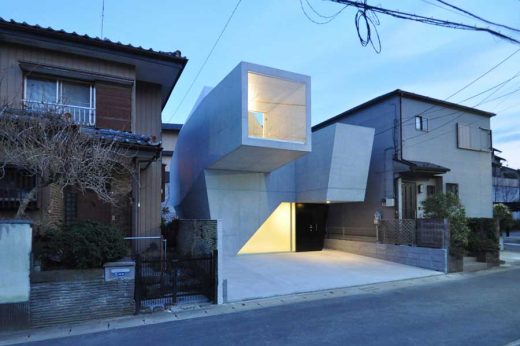
photo from architect
House in Abiko
Design: Tato architects
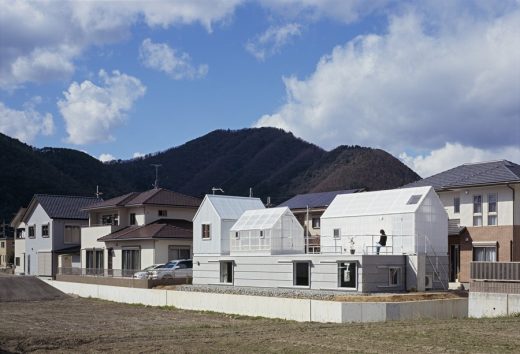
photo : Ken’ichi Suzuki
House Yamasaki
House in Asamayama, Nagano, central Japan
Design: Kidosaki Architects Studio
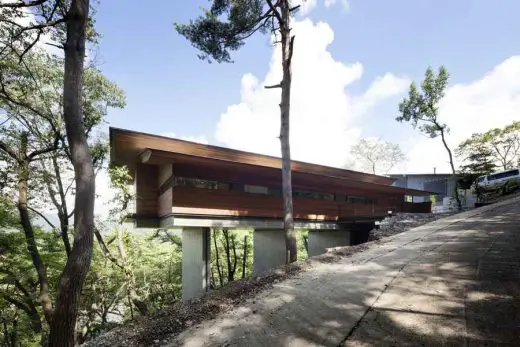
photo : 45g Photography
House in Asamayama
Contemporary Houses : Designs + Images from around the world
Comments / photos for the MORI no KAISHO, Meeting Place of Forest, Nara, Japan – designed by Tetsuo Kobori Architects page welcome

